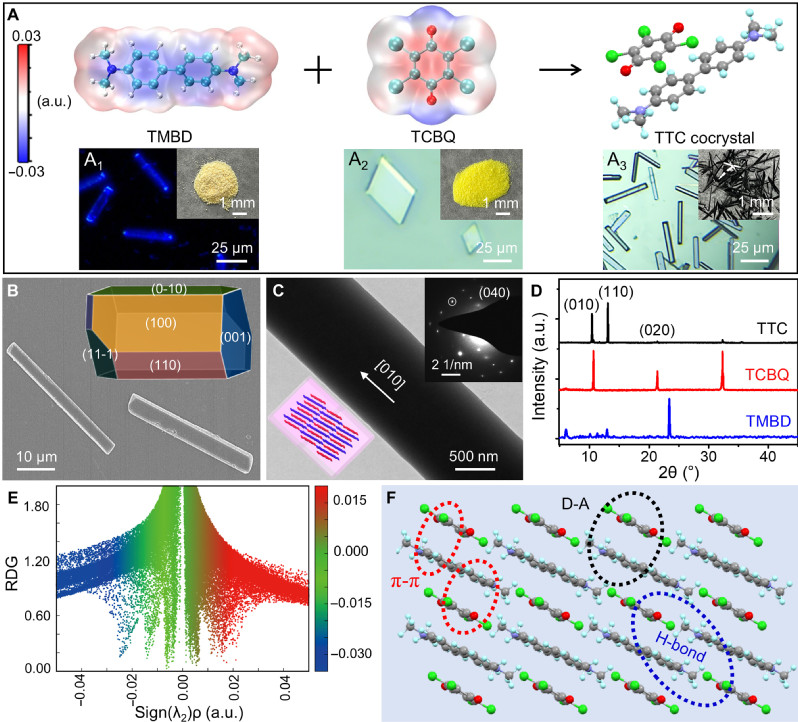Stretchable photothermal membrane of NIR-II charge-transfer cocrystal for wearable solar thermoelectric power generation
Zhao, Yu Dong1; Jiang, Wangkai2; Zhuo, Sheng3 ; Wu, Bin1,4; Luo, Peng1; Chen, Weifan3; Zheng, Min2; Hu, Jianchen2; Zhang, Ke-Qin2*(张克勤); Wang, Zuo-Shan1*(王作山); Liao, Liang-Sheng4*(廖良生); Zhuo, Ming-Peng2,4*(卓明鹏)
1College of Chemistry, Chemical Engineering and Materials Science, Soochow University, Suzhou 215123, China.
2College of Textile and Clothing Engineering, Soochow University, Suzhou, 215123, China.
3School of Physics and Materials Science, Nanchang University, Nanchang, 330031, China.
4Institute of Functional Nano and Soft Materials(FUNSOM), Soochow University, Suzhou 215123, China
Sci. Adv. 2023, 9, eadh8917
Abstract: Harvesting sunlight into cost-effective electricity presents an enticing prospect for self-powered wearable applications. The photothermal materials with an extensive absorption are fundamental to achieve optical and thermal concentration of the sunlight for efficiency output electricity of wearable solar thermoelectric generators (STEGs). Here, we synthesize an organic charge-transfer (CT) cocrystal with a flat absorption from ultraviolet to second near-infrared region (200 to 1950 nanometers) and a high photothermal conversion efficiency (PCE) of 80.5 %, which is introduced into polyurethane toward large-area nanofiber membrane by electrospinning technology. These corresponding membranes demonstrate a high PCE of 73.7% under the strain more than 80 %. Sandwiched with carbon nanotube–based thermoelectric fibers, the membranes as stretchable solar absorbers of STEGs could supply a notably increase temperature gradient, processing a maximum output voltage density of 23.4 volts per square meter at 1:00 p.m. under sunlight. This strategy presents an important insight in heat management for wearable STEGs with a desired electricity output.

链接: //www.science.org/doi/10.1126/sciadv.adh8917